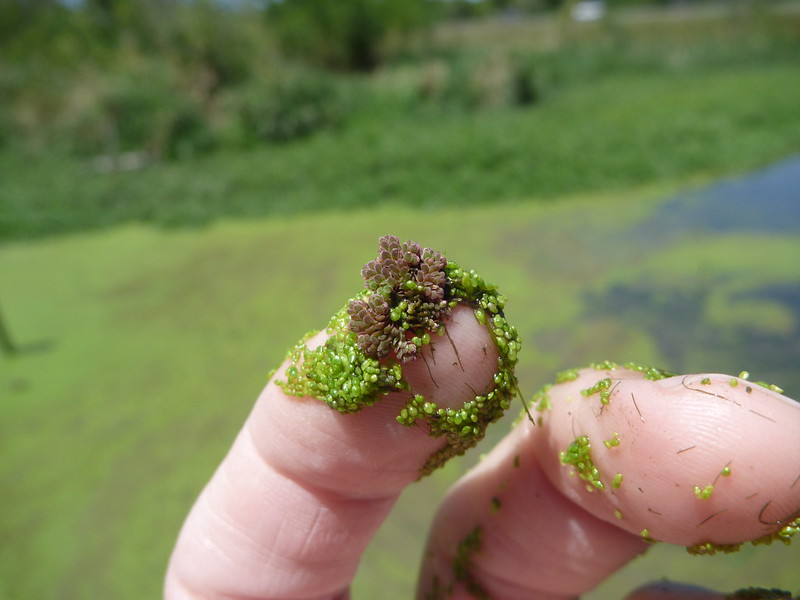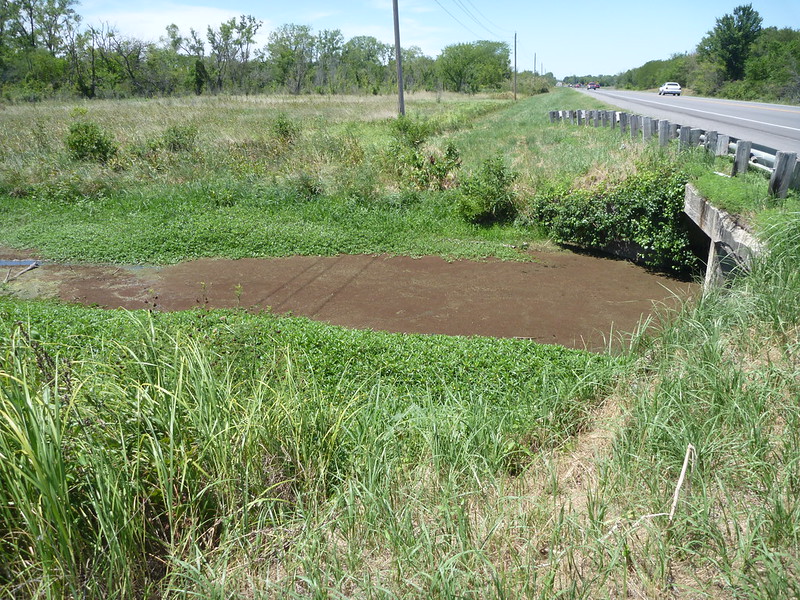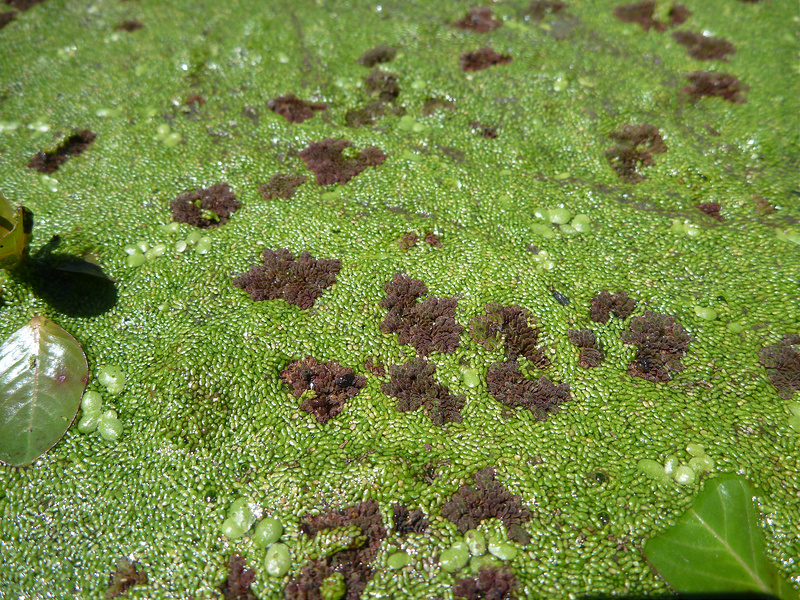While trying to find some swamp milkweed and some monarchs out at the Baker Wetlands, I happened to notice the canal’s normal lush duckweed population was turning spotty and brown.

I said to Carol that I think that is Azolla–a water fern. Azolla is a nitrogen fixer through a symbiotic interaction with a cyanobacteria. I got down closer and took a look.

In the image above you can see a few duckweed fronds along with a bunch of water meal or “Wolffia” surrounding the little reddish islands of Azolla sp. As I looked closer there was no doubt.

Azolla gets that reddish color due to anthocyanins largely in response to stress. Can’t think of why aquatic plants might be under stress this summer. 😉 At any rate the Azolla seems to be doing better than the other two. At least that is what I concluded after looking up the canal towards 31st Street. There as you can see the Azolla is completely dominating the surface environment.

I’ll try to get a culture up and going and get some microscope images as well. For now, those biology teachers in the area might want to think about getting themselves a starter culture going for their own classrooms. It is a really neat little plant. Just google Azolla or Azolla in the classroom or Azolla Lab, etc. to get a ton of ideas but let me share some of what you might find:
Like duckweed, Azolla makes a good model organism for population growth and for studying the factors that affect population growth. It is a great organism to inspire students to questions they can use to direct and design their own investigations. As an aquatic plant it has been studied as a possible candidate for bioremediation. It has been used as a green manure in rice fields and is being investigated as a biofuel or alternative feed for livestock. It has been implicated in some of the spectacular climate shifts during the Eocene. And perhaps the most cool thing of all was the fern and the cyanobacterium were recently studied as an possible example of a symbiotic interactions somewhere along the path towards full incorporation like the mitochondria. Check out the following resources for ideas if you have time. I really think you’ll find these little plants worth the time and here they are ready for your first day of class. I’ll see you at the Bottoms as you collect the start of your culture.
http://www.plantphysiol.org/content/64/5/791.full.pdf
http://www.scienceinschool.org/repository/docs/issue21_azolla.pdf
http://sciblogs.co.nz/bioblog/2010/08/01/azolla-endosymbiosis/
http://www.plosone.org/article/info%3Adoi/10.1371/journal.pone.0011486
